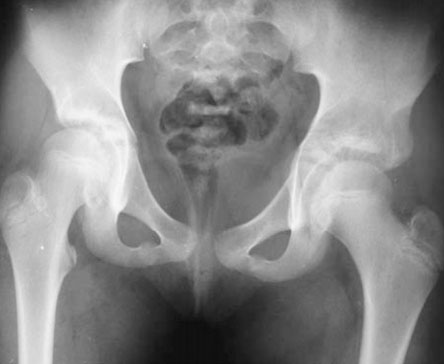Budak Akman, Korhan Ozkan, Hakan Cift, Kaya Akan, Engin Eceviz, Abdullah Eren
Received: 7 April 2009 / Accepted: 8 July 2009 / Published online: 29 July 2009
EPOS 2009
Abstract
Purpose: In this study, we aim to investigate whether the hip with To¨nnis type II dysplasia in children older than 18 months can be treated without open reduction.
Methods: In our study, 47 hips (47 patients) with type II developmental dysplasia of the hip according to the To¨nnis classification were treated by a combination of open reduction through an anterolateral approach with iliopsoas tenotomy followed by innominate osteotomy and capsulorrhaphy or iliopsoas tenotomy followed by innominate osteotomy. The patients with open reduction constitute the open Salter group (32 hips), while the rest of the patients with innominate osteotomy alone constitute the closed Salter group (15 hips). The acetabular index (AI) and Smith’s c–b and h–b index were assessed on the preoperative, immediate postoperative and final follow-up hip X-rays.
Results: There were no statistically significant differences related to sex distribution, age and postoperative follow-up time between the patients of each group. There was also no statistically significant difference between the preoperative AI of the open and closed Salter osteotomy groups. Overall, 80% of hips with open reduction had Smith’s c–b ratio greater than the value of 1 and h–b ratio lower than the value of 0.05.
Conclusion: The preoperative c–b index of the open osteotomy group was statistically greater than the c–b index of the closed osteotomy group and the preoperative h–b index of the open Salter group was statistically smaller than the h–b index of the closed Salter group, which means that most of the hips in the open osteotomy group are more in a lateralised and superior position compared to the closed osteotomy group. To us, there exists a subgroup of hips with less lateralisation and superior displacement according to the Smith’s c–b and h–b ratio in To¨nnis type II hip dysplasia. These hips might be less amenable to capsulorrhaphy because of the lower capsular instability and treatment may be done with closed reduction after iliopsoas tenotomy with Salter osteotomy in this select group of patients.

